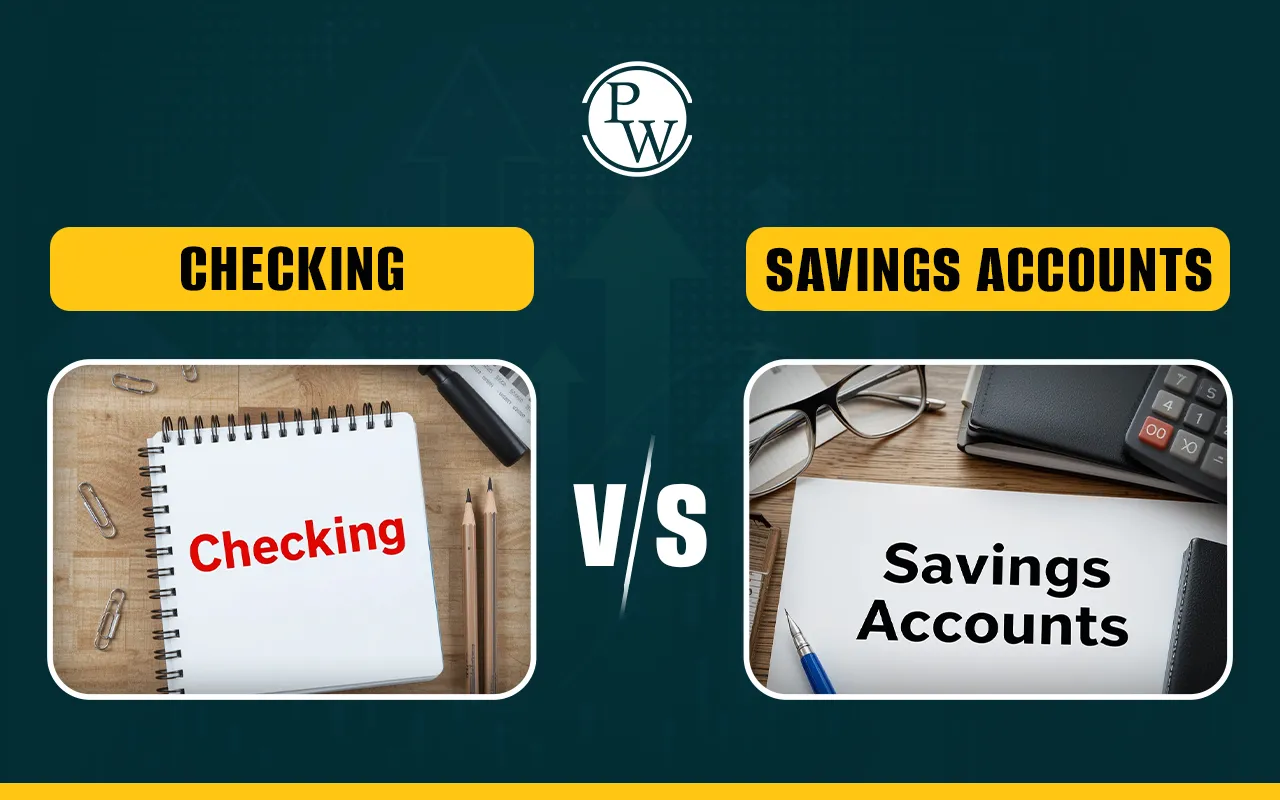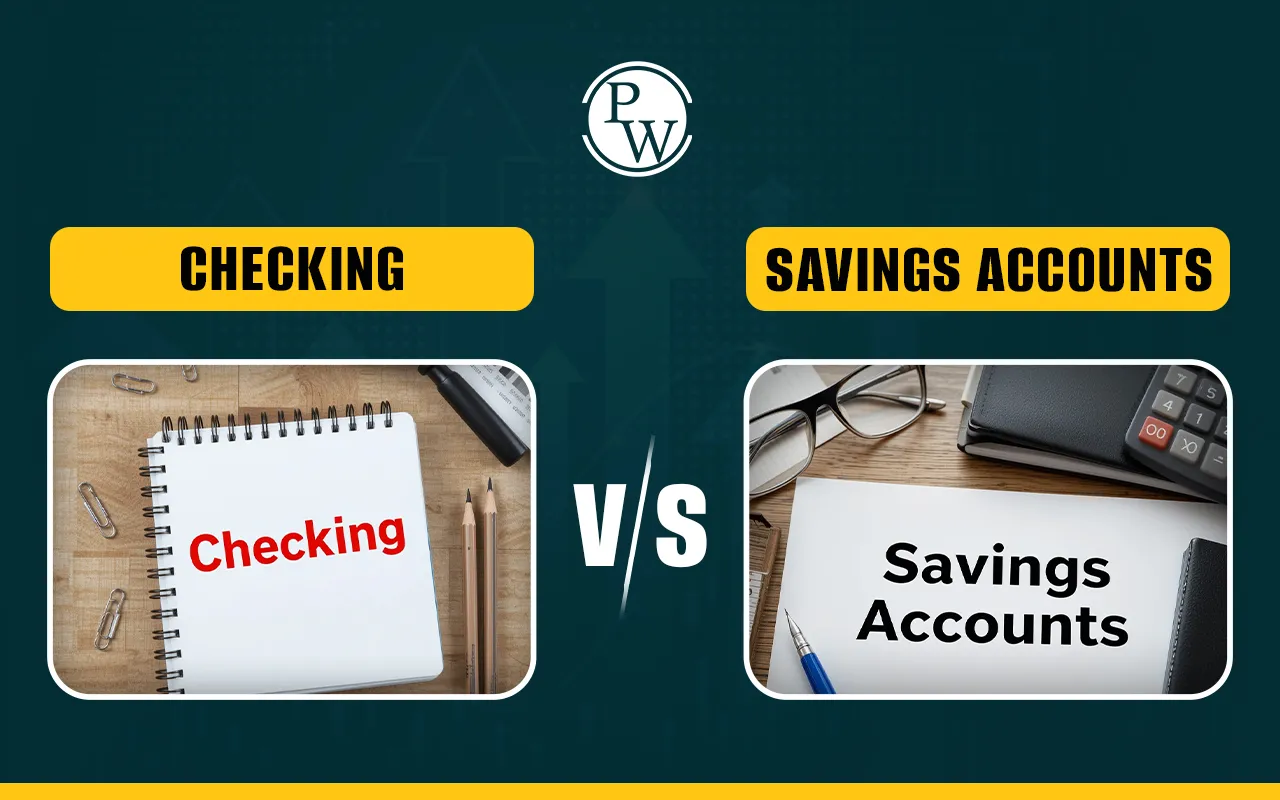

Managing your money wisely is one of the most important life skills, and choosing between a checking vs. savings accounts is a decision everyone faces. On the surface, these accounts might seem similar. After all, both hold your money, are offered by banks, and help you manage your finances. But the reality is, each serves a different purpose, and understanding those differences can help you better align your finances with your goals.
Here, we’ll dive deep into what makes a checking account different from a savings account, when to use each, and how you might benefit from having both. We’ll also answer some common questions people ask about banking, like what’s the difference between checking and savings account Chase offers, or how do I know if my account is checking or savings?
What Are Checking and Savings Accounts?
At their core, both checking vs. savings accounts are financial tools offered by banks and credit unions that hold your money. But the similarities end there.
Checking Accounts are designed for everyday money management. You use them to pay bills, receive direct deposits, make ATM withdrawals, and shop with debit cards. They offer easy, frequent access to your funds.
Savings Accounts, on the other hand, are made for storing money you don’t need immediately. Their purpose is to help you grow your funds with interest over time while keeping it accessible, albeit with certain restrictions.
Checking vs. Savings Accounts
If you’re wondering about the difference between checking and savings account Chase or any other bank, it typically comes down to function, access, and interest rates. The following are main differences:
Purpose
Checking accounts are for day-to-day spending: groceries, subscriptions, utility bills, and more.
Savings accounts are for setting aside money for future goals: emergency funds, vacations, or a down payment on a house.
Access to Money
With checking accounts, you have unlimited transactions, debit card access, check-writing ability, and easy online payments.
With savings accounts, transactions are more limited. Traditionally, banks restricted savings account withdrawals to six per month (a rule lifted in 2020, though some banks still enforce it).
Interest Rates
Savings accounts generally offer higher interest rates than checking accounts. While some high-yield checking accounts exist, the rates usually don’t compete with those from high-yield savings accounts or money market accounts.
Fees
Checking accounts might charge monthly maintenance fees, overdraft fees, and ATM fees.
Savings accounts might impose fees for excess withdrawals or dropping below minimum balance requirements.
Read More - Accounting Skills to List on Your Resume and How to Improve Them
Checking Account vs. Current Account
A common point of confusion is between a checking account vs. current account. The terms are often used interchangeably, especially in different countries.
In the U.S., we say checking account. It’s your everyday transactional account for deposits, withdrawals, and payments.
In countries like India and the U.K., a current account serves the same purpose as a U.S. checking account. It’s for frequent transactions, offers easy access to cash, and often includes debit cards, checkbooks, and online banking services.
So, whether it’s checking account vs current account, the function remains essentially the same; it’s just a difference in terminology.
How Do I Know if My Account Is Checking or Savings?
If you’ve ever wondered how do I know if my account is checking or savings, the answer lies in your account number and features. The following is how to check:
-
Look at your bank statement: It’ll usually specify the account type next to your account number.
-
Check your banking app or online banking: The account title typically includes “Checking” or “Savings.”
-
Review your bank documents: The paperwork from when you opened the account will mention the type.
Read More - What are Assets in Accounting?
Withdrawal Limits in Checking vs. Savings Accounts
When managing your money, knowing your withdrawal limits in checking vs. savings accounts is crucial.
Checking Accounts
Generally, checking accounts allow unlimited deposits and withdrawals. However, daily ATM withdrawal and debit card transaction limits might exist, typically ranging from $300 to $2,000, depending on your bank and account type.
Savings Accounts
Many banks still cap savings account withdrawals at around six per month to encourage saving behavior. Exceeding this can result in fees or account conversion to checking status.
Which Is Better Checking vs. Savings Accounts?
The real question isn’t whether one is better than the other, it’s which suits your financial needs.
-
If you want a convenient, no-fuss way to pay bills, make online purchases, and access your cash daily, a checking account is best.
-
If you’re aiming to set aside money for future expenses or an emergency fund while earning a bit of interest, a savings account is ideal.
Truthfully, most people benefit from having both. Use your checking account for daily expenses and your savings account for financial goals and rainy-day funds. Linking them allows you to transfer money as needed while keeping your savings intact.
Difference Between Checking and Savings Account Chase Offers
If you bank with Chase or are considering it, understanding the difference between checking and savings account Chase offers can be helpful. Like other banks:
-
Chase checking accounts offer easy access to your funds, debit cards, online bill pay, and mobile apps.
-
Chase savings accounts offer competitive interest rates, automatic savings tools, and withdrawal limits to help you save effectively.
You can even link your Chase checking and savings accounts for seamless transfers and overdraft protection.
At the end of the day, both checking vs. savings accounts play essential roles in managing your finances. Having both provides flexibility, security, and financial growth opportunities.
The key is to understand the strengths and limitations of each and to use them strategically: spend from your checking account, save in your savings account.
And if you’re passionate about mastering personal finance, banking operations, or pursuing a career in the financial sector, don’t miss out on PW BFSI Courses. These industry-relevant programs equip you with practical knowledge and skills for the ever-evolving banking, finance, and insurance sectors.
PW BFSI Courses help you become confident in handling financial products like checking vs. savings accounts, investment options, loans, and more. It’s time to boost your career and financial literacy.
FAQs
What is the main difference between checking vs. savings accounts?
How do I know if my account is checking or savings?
Can I have both a checking and a savings account?
Are there withdrawal limits on savings accounts?













